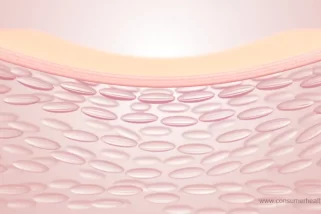The effects of melasma can be devastating to your confidence, shaking your otherwise positive outlook. When your appearance is outside of your control, it can distract you from enjoying the best of life. And as a skincare condition with no cure, finding a treatment protocol is critical to looking and feeling your best.

Thankfully, there are many ways to treat the appearance of melasma and combat known triggers, reducing flare-ups at the source. From in-home treatments to those guided by a professional, there’s likely a treatment method that’ll suit your lifestyle. Here are a few tips to find what option works best for you:.
1. Research Which Prescription Medications Reduce Hyperpigmentation
Melasma is a skin condition where excess melanin is produced, resulting in hyperpigmentation. First, consider the potential source of your discoloration to determine which prescription medication might help improve your complexion.
Many people experience melasma during or after pregnancy, thanks to the influx of hormones needed for creating life. After birth and breastfeeding, hormones drop and regulate, but the lasting effects of melasma can remain. Others are predisposed to hyperpigmentation while one-time or long-term medications needed to manage other conditions trigger discoloration.
Tretinoin, the popular skincare treatment often used to manage acne and reduce wrinkles, can also reduce excess pigmentation caused by melasma. This treatment is effective thanks to its high concentration of vitamin A, which can also provide anti-aging fringe benefits. Using this treatment can reduce the appearance of discoloration while other medications lessen excess pigmentation.[1]
To reduce the production of melanin in the body, you can also use hydroquinone cream. This short-term prescription helps limit the amount of melanin your body produces when applied directly to areas of discoloration. Because hydroquinone is so potent, it should always be used under a doctor’s care. Many prescribers recommend cycling usage to reduce potential irritation. [2]
One option you can swap in when cycling is azelaic acid gel. It can be used with hydroquinone safely during the prescribed period or afterward. Azelaic acid works to reduce dark spots and discoloration and is effective on most skin types and tones.
2. Pair Prescriptions With Self-Care
Just like with any self-improvement endeavor, the habits you keep at home often have the biggest impact on your results. Going to the gym a couple times a week won’t make a difference if you go home to eat junk food on the couch. Similarly, when you’re managing melasma, you have to improve your everyday habits. This involves breaking down your treatment between skincare and self-care.
While the treatments mentioned above are a vital aspect of a melasma treatment plan, you should also use a gentle cleanser and moisturizer. Look for a moisturizer with ceramides, which help skin retain moisture all day, and SPF. Protecting your skin from melasma-triggering ultraviolet rays is especially important, so commit to daily sun protection through multiple avenues.[3]
Ensure your moisturizer includes SPF 30 or better, wear sunglasses, and don a wide-brimmed hat when in the sun. Sunscreen formulas with zinc oxide, iron oxide, and titanium dioxide provide great, lightweight protection. Make sure you reapply sunscreen throughout the day, as this can reduce the potential for sunburns, which could worsen discoloration.
Prioritize stress management to improve your skin, reduce early aging, and improve your mood too. If you’re stressed, the signs often show on your face and within your body. Some studies even link increased cortisol levels to melasma flare-ups. To reduce stress, you could try meditation, yoga, regular exercise, and/or improving your sleep habits. What works for you will be unique, so try a few different techniques.[4]
3. Upgrade Your At-Home Skincare Routine
Prescription treatments go a long way when it comes to treating melasma, but there are many at-home treatments you can incorporate, too. Over-the-counter products are typically less potent than in-office options or prescriptions, but this can be advantageous. If you’re cycling prescriptions or taking a break, at-home maintenance can keep your progress on track.
You can encourage cell turnover with chemical-based exfoliants, which can bring new, more even skin to the surface. Sloughing off old cells can reveal brighter skin that contains a more even distribution of melanin. Your old standby apricot scrub or something similar may be the first to come to mind, but don’t go there. Physical exfoliants can damage already sensitive skin and delay pigmentation improvements. Instead, stick with gentler and more effective chemical formulas.[5]
Lactic acid is an effective, yet gentle, treatment that’s great for dry and sensitive skin. If you haven’t used an acid before, lactic acid is typically a safe place to start and work up from. Alpha-hydroxy acid is another effective acid that’s often incorporated into other skincare products. Glycolic acid is another one of the safest to use for those with melasma, even if you’re dealing with acne-prone skin too.
In addition to an exfoliant, you should consider adding a vitamin C serum. This can boost collagen production and even cause discoloration. Keep in mind that vitamin C is powerful. If your skin is on the dry side, try mixing it with moisturizer to reduce irritation. Individuals with combination or oily skin should start with a lower concentration and work up over time.
Make Managing Melasma Part of Your Lifestyle
Skin discoloration doesn’t have to be part of your story. Prioritize caring for your skin, protecting it from external factors, and treating your melasma. When you do, you can enjoy additional benefits like less stress, an even complexion, and a fresh outlook on life.
5 Sources
We review published medical research in respected scientific journals to arrive at our conclusions about a product or health topic. This ensures the highest standard of scientific accuracy.
[2] Unmasking the causes and treatments of melasma: https://www.health.harvard.edu/womens-health/unmasking-the-causes-and-treatments-of-melasma
[3] Melasma: Self-Care: https://www.aad.org/public/diseases/a-z/melasma-self-care
[4] Melasma: Causes: https://www.aad.org/public/diseases/a-z/melasma-causes
[5] 9 Ways to Treat Melasma Once and For All, According to Dermatologists: https://www.byrdie.com/melasma-treatment-4842254






